PHOENIX – The need for skilled people willing to get their hands dirty is growing across the country. But will there be enough craftspeople to meet that demand?
The Arizona Commerce Authority estimates that by 2030, the number of people employed in construction and manufacturing jobs in the state are expected to rise 30% and more than 20%, respectively.
The trend comes at a time when turnover is abnormally high and fewer young people are choosing trade careers, according to Associated Builders and Contractors and other industry groups.
“I’ve seen in the last decade a huge shift,” said Bruce Wilson, energy and engineering program director at Western Maricopa Education Center, or West-MEC, a public school district that provides trade education. “Right now, there is a huge opportunity for tradespeople going into the trades that are in demand, and nobody can get enough. Instead of having one or two openings, now companies have four or five openings constantly, so the opportunities for these people are just through the roof.”
Some Arizona schools and educational programs are working to teach the next generation of laborers the skills that contractors need and which could lead to satisfying careers that pay well.
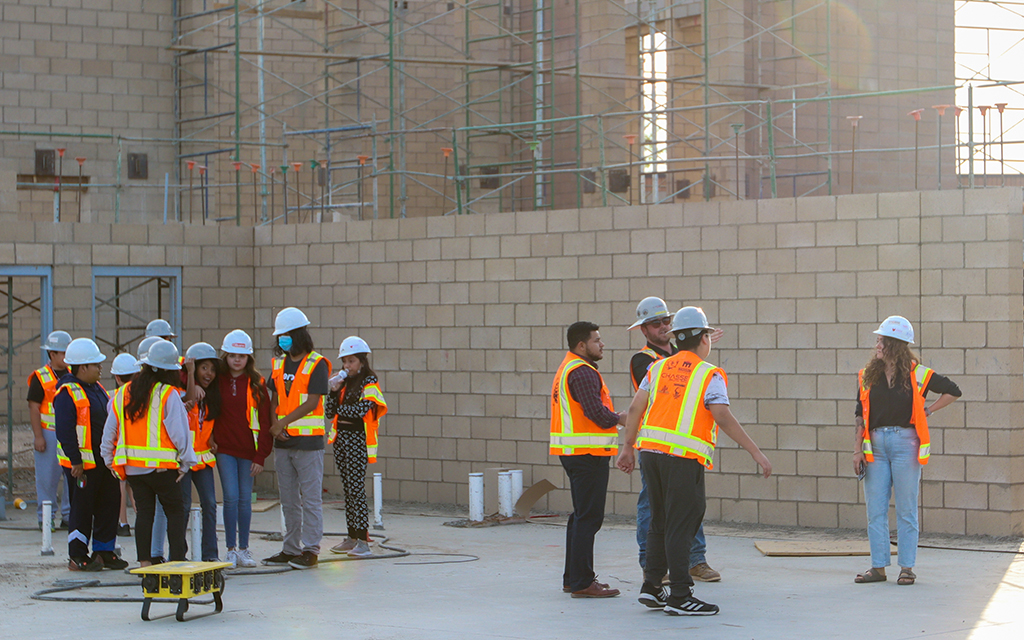
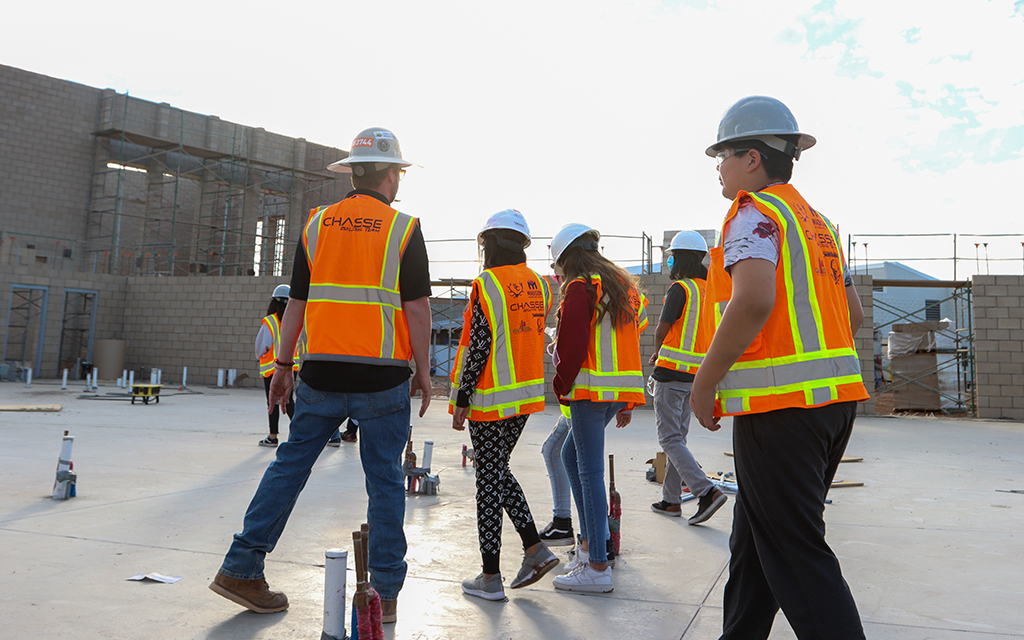

Left: The addition to Madison Park Middle School in Phoenix will be used for science labs, a library and other amenities. Photo taken on Nov. 1, 2022. Center: Students in the six-month TradeUp! program at Madison Park Middle School take a tour of an addition under construction on their Phoenix campus on Nov. 1, 2022. TradeUp! is considering expanding to more schools in the near future. Right: Nelson Martinez Jr., the jobsite superintendent for Chasse Building Team, shows TradeUp! students the building team’s progress on a jobsite at Madison Park Middle School in Phoenix. Photo taken Nov. 1, 2022. (Photos by Justin Spangenthal/Cronkite News)
TradeUp! is a collaboration of construction and labor professionals that teaches students at Madison Park Middle School in central Phoenix about trade labor professions to familiarize them with career options that may not be taught or encouraged in schools.
The six-month program invites trade professionals to come to the school, or bring students to their sites, to provide instruction and hands-on experience. The students learn about masonry, electrical, plumbing, HVAC, carpentry, drywall, roofing and other trades.
TradeUp! is considering expanding to more schools in the near future, but for now it’s offered only at Madison Park.
Anaya Jordan, 13, and her friends joined TradeUp! because they have some family in the industry and they thought it would be fun to do together.
“TradeUp! is cool because we get to learn a lot of new stuff about things like construction and plumbing,” Jordan said.
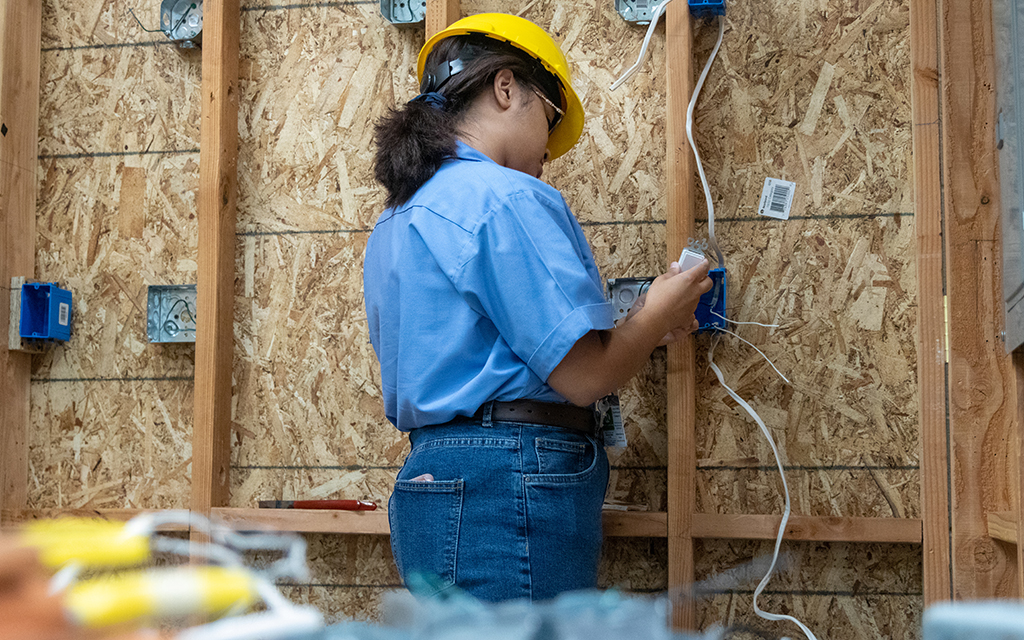
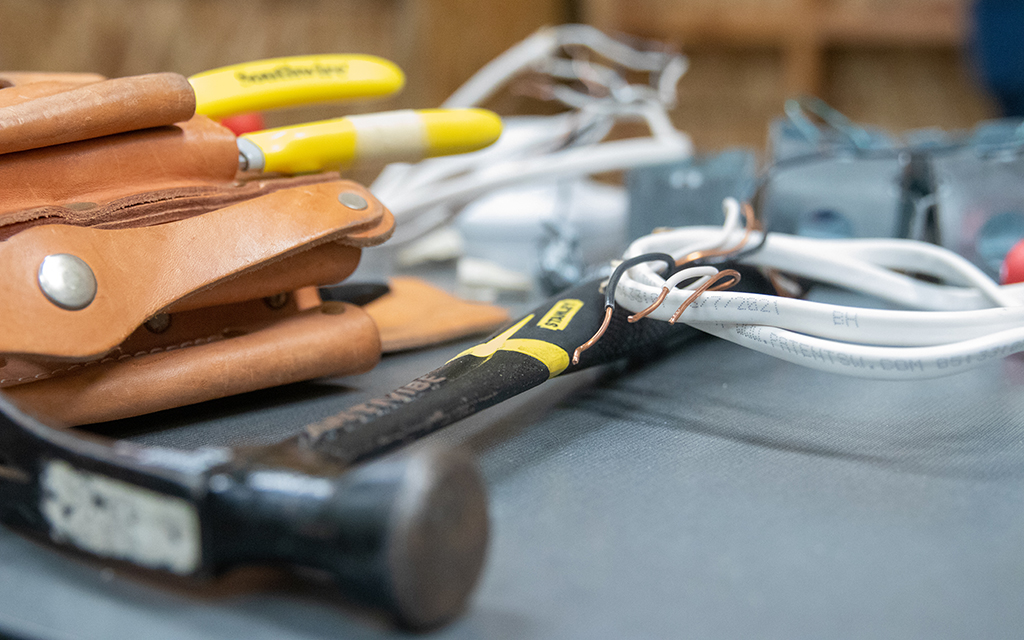
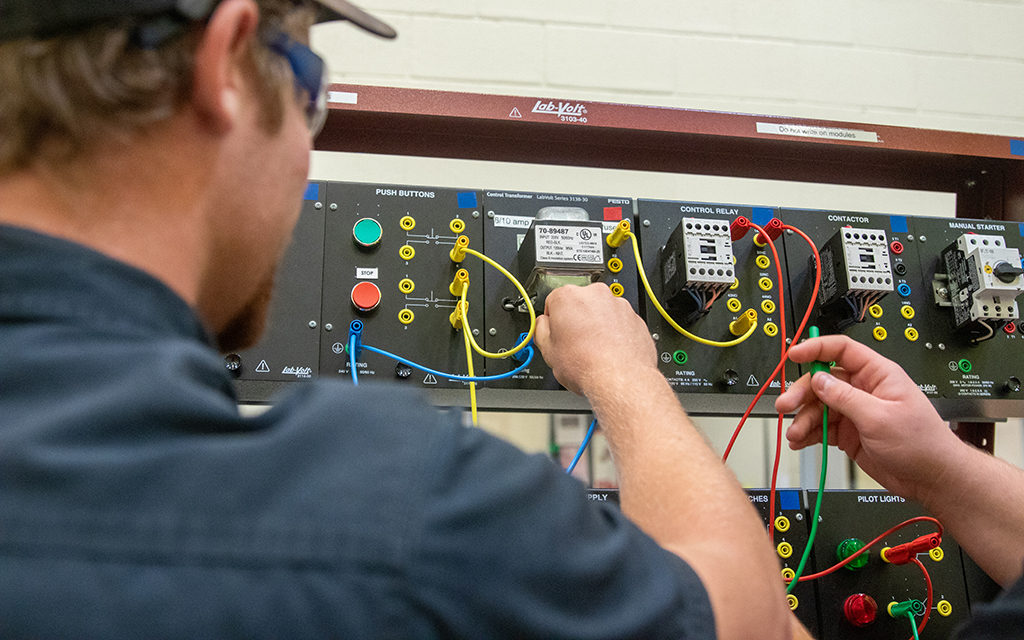
Left: Electrical trade student Nora Marshall, 18, wires a light switch in her electrical class at West-MEC in Buckeye on Sept. 16, 2022. Center: Materials and tools needed for an electrical class assignment are laid out on a workbench at West-MEC in Buckeye on Sept. 16, 2022. Right: Energy-trade students Jarrod Swayze, left, and Jacob Nickolich plug in wires and cables for class at West-MEC in Buckeye on Sept. 16, 2022. (Photos by Emily Mai/Cronkite News)
Trade schools prepare students for jobs and help with getting certifications and apprenticeships.
West-MEC offers adult career and technical education programs ranging from construction and electrical to welding and automotive, but it also teaches high school students at their campuses in the north and West Valley. West-MEC also has partnerships with 14 public districts and two charter schools to bolster elective courses offered on certain campuses.
“We’re feeding into not only the power-generation industry, but all of the manufacturing industry, all the maintenance,” Wilson said. “They’re going to come out of here industry-ready entry-level operators and technicians for virtually any industry.”
Students can get started on trade education and certifications while simultaneously getting their high school diplomas. Most courses at West-MEC can be used for dual credit for high school and college.
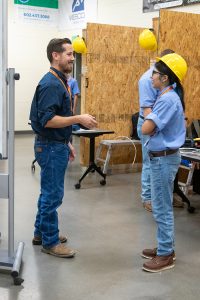
Electrical instructor Jamie Miller speaks to student Liliana Bustos, 18, during class at West-MEC in Buckeye on Sept. 16, 2022. (Photo by Emily Mai/Cronkite News)
Jamie Miller, electrical instructor at West-MEC, said electrical students leave with an OSHA 10 certification from the Occupational Safety and Health Administration and their first year of apprenticeship completed. Miller said the program has a 100% success rate in matching students to their next apprenticeship, which is required for a career as an electrician.
West-MEC works directly with contractors and professionals in the business to ensure that students get hands-on learning experiences. Industry professionals serve on advisory boards within the school and work with instructors to ensure that up-to-date industry standards and procedures are being taught.
“The opportunities that (West-MEC) offers us is way beyond what other trade schools have, and the best part is being able to connect directly with industry superiors so I can see how they work and work with them,” said Jarrod Swayze, 17, a high school and West-MEC student.
According to West-MEC’s impact report for the 2021-22 school year, more than 5,000 students earned industry certifications, and the institution’s central program – which is made up of more than two dozen of their core subject areas – has a 100% passing rate.
“People need to be exposed to construction jobs and know that the craftsmen are smart,” Miller said. “These fields require math, reading and precise measurements. …This field is here, and it needs to evolve and grow.”